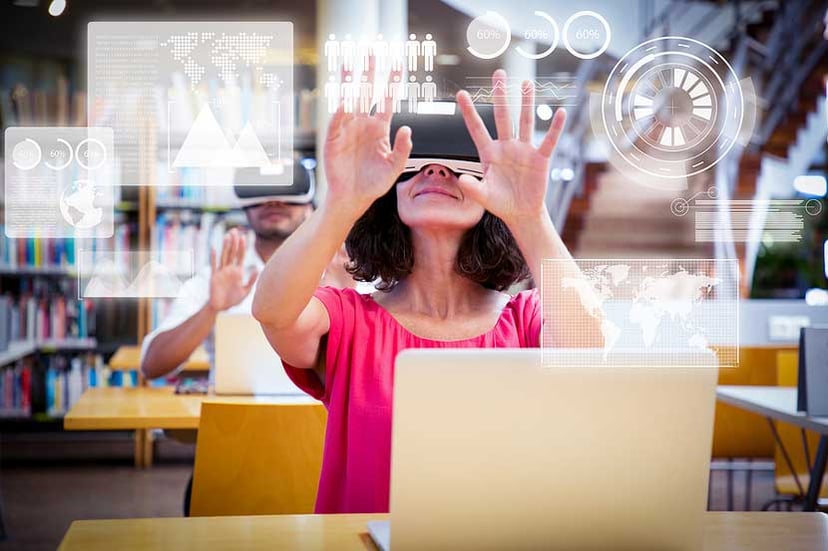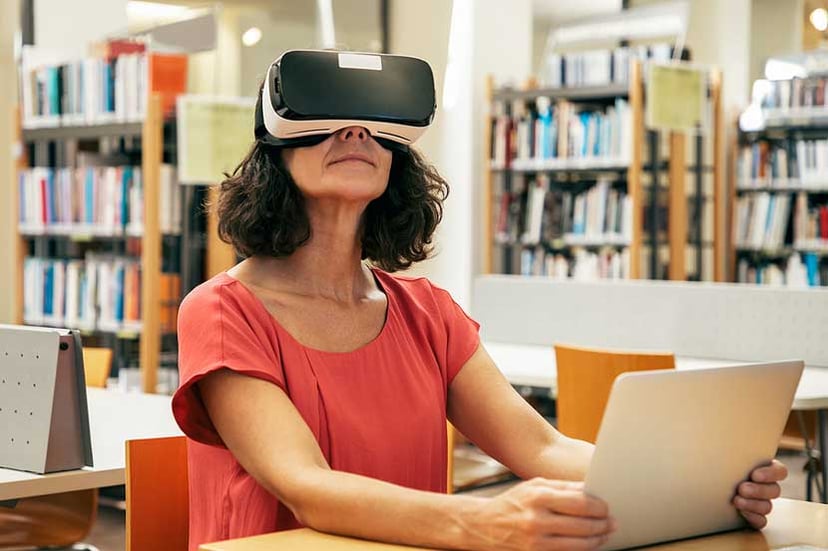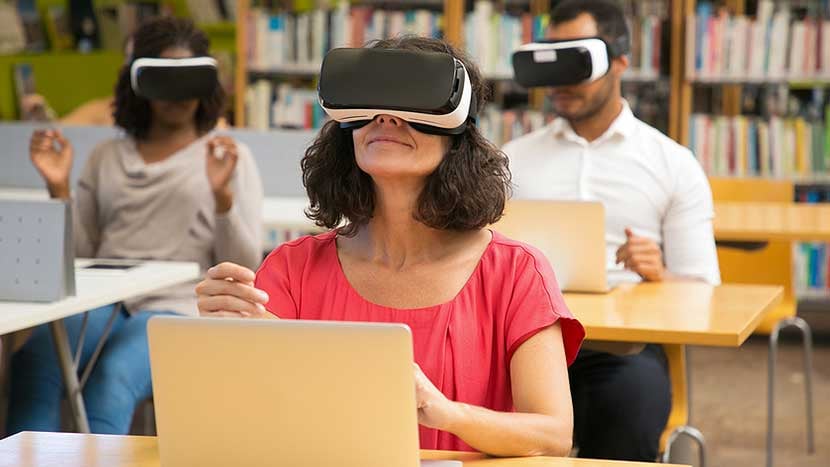Virtual reality (or VR) has long felt like a trend of the future. In fact, if you look back at technology trend reports from the last two decades, real-world applications of virtual reality appeared time and time again as a line item in the “what’s next” category.
For many industries, including the library space, this made it easy to keep the technology on the sidelines rather than focus on its potential.
Now, it’s safe to say that VR is here to stay. From video games to architecture and everywhere in between, VR technology has a tangible role to play in a number of industries — and the library sector isn’t an exception.
Around the world, academic and public libraries are stepping into the future and leveraging emerging technologies for a variety of purposes. As the technology becomes more pervasive, this is an important transformation that’s vital to meeting library members where they are.
In this post, we’ll explore how libraries can think through starting a VR center and make the most of the innovation.
See also:
What is virtual reality?
Let’s start with a quick definition. Virtual reality is a computer-generated simulation of three-dimensional images or 360-degree environments that users can seemingly interact with.
Individuals can typically enter these environments using specialized VR hardware including visors or headsets, and interact with virtual objects and other elements within the virtual world using controllers in their hands.
This is different from augmented reality, which uses the existing environment as a backdrop and adds digital elements to it.
When it comes to using virtual reality in libraries, there are a number of use cases. For example, a library can offer educational modules that take place in a virtual setting.
Alternatively, VR resources can be used to offer interactive content experiences or remote assets that members can connect to from home if they have VR headsets.

Virtual reality for education
VR is reshaping what education looks like. By accessing a lab equipped with modern headsets and controllers, VR users who live in a small town in the US can travel to the pyramids in Egypt or the Great Wall of China. Monuments, environments, and even museums that were once relegated to the page or computer screen suddenly become accessible.
In this way, a VR studio can also make it much easier for students to conduct research at a distance. When grants are few and far between for graduate students, this globalizing element can bring places and items closer, without the cost of travel.
It doesn’t stop there. For architecture students, having access to virtual reality programs like those offered by the University of Calgary libraries puts designs and models into real-life scale. This is vital to “not only appreciate the design and materiality but also to grasp the conceptual elements the designer is portraying in the project.”
VR for interactive content experiences
Beyond education, virtual reality is also a great way for people to engage with mainstream content and experiences. A library with a virtual reality center can build a robust catalog of entertainment content that includes live performances and concerts, films, video games, and more.
The Western Michigan University libraries has a list of available movies that have been redesigned for VR experiences, so people can follow their favorite characters through their adventures. Imagine following Miguel through his colorful Dia de los Muertos experience in Coco, or coming face-to-face with a T-Rex in Jurassic World.
It’s these interactive VR experiences that can draw more people into the library, making it more likely for them to leverage other available services.

Virtual reality for remote access
The COVID-19 pandemic put a lot of pressure on libraries to rethink how they provided remote access to their resources. From setting up databases of ebooks and audiobooks to adopting digital newsstands like PressReader, which allows members to access materials from anywhere with their library login, libraries stepped up to connect their members with new technologies.
Today, as library members continue to opt for remote and digital experiences, virtual reality is another way to share content. While not many public libraries do this yet there’s an opportunity to create a catalog of content that members can use from home if they have their own VR headsets.
This way, the library can continue to stay relevant as members take ownership of their virtual reality consumption.
VR for empowering creative members
There are two ends of the virtual reality experience: being immersed in content, and creating that content. Once you’ve set up a virtual reality center that members can use to explore other worlds, you can also consider investing in cameras that film 360 video and 3D modeling technology.
Making this equipment available to library members can help launch a new generation of creators and give them the opportunity to become active contributors of the new digital economy.
At the Georgetown University Library, for example, there are two Ricoh Theta Cameras that are available to students and faculty. And at Western Michigan University, their library’s virtual reality lab has 3D modeling tools, VR game engines, and other content creation tools available.
The opportunities for libraries to implement VR technologies are endless. They create space for public and academic libraries to be future forward, enabling their members to participate more actively in digital experiences that are defining the future. Plus, by offering users the opportunity to experience VR, libraries can continue to democratize access to content, education and experiences that were previously unavailable to most of their members.
That’s a win-win in our books.







.jpg)

